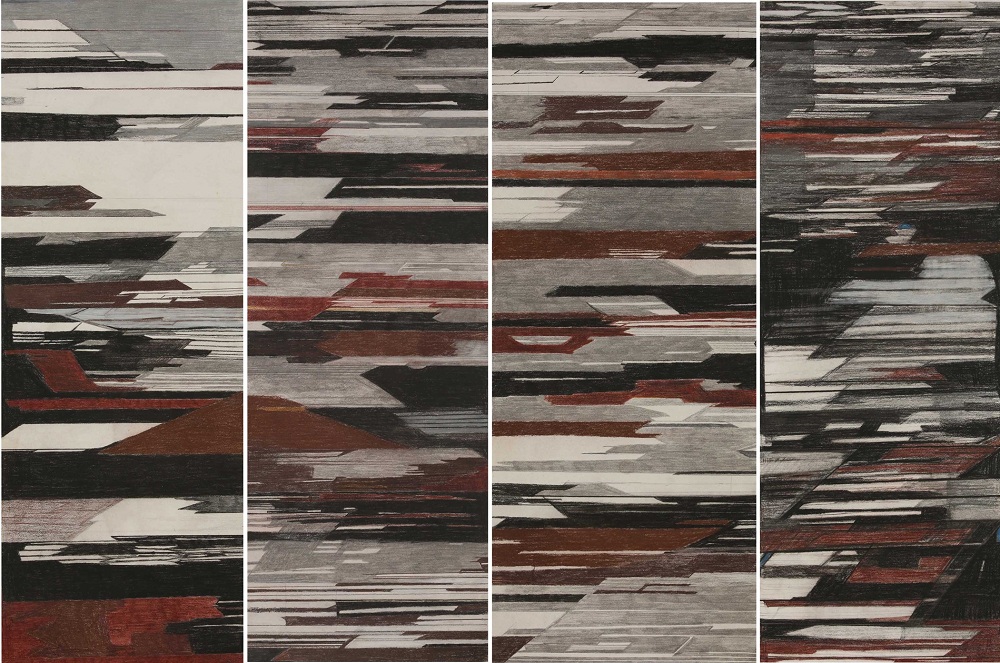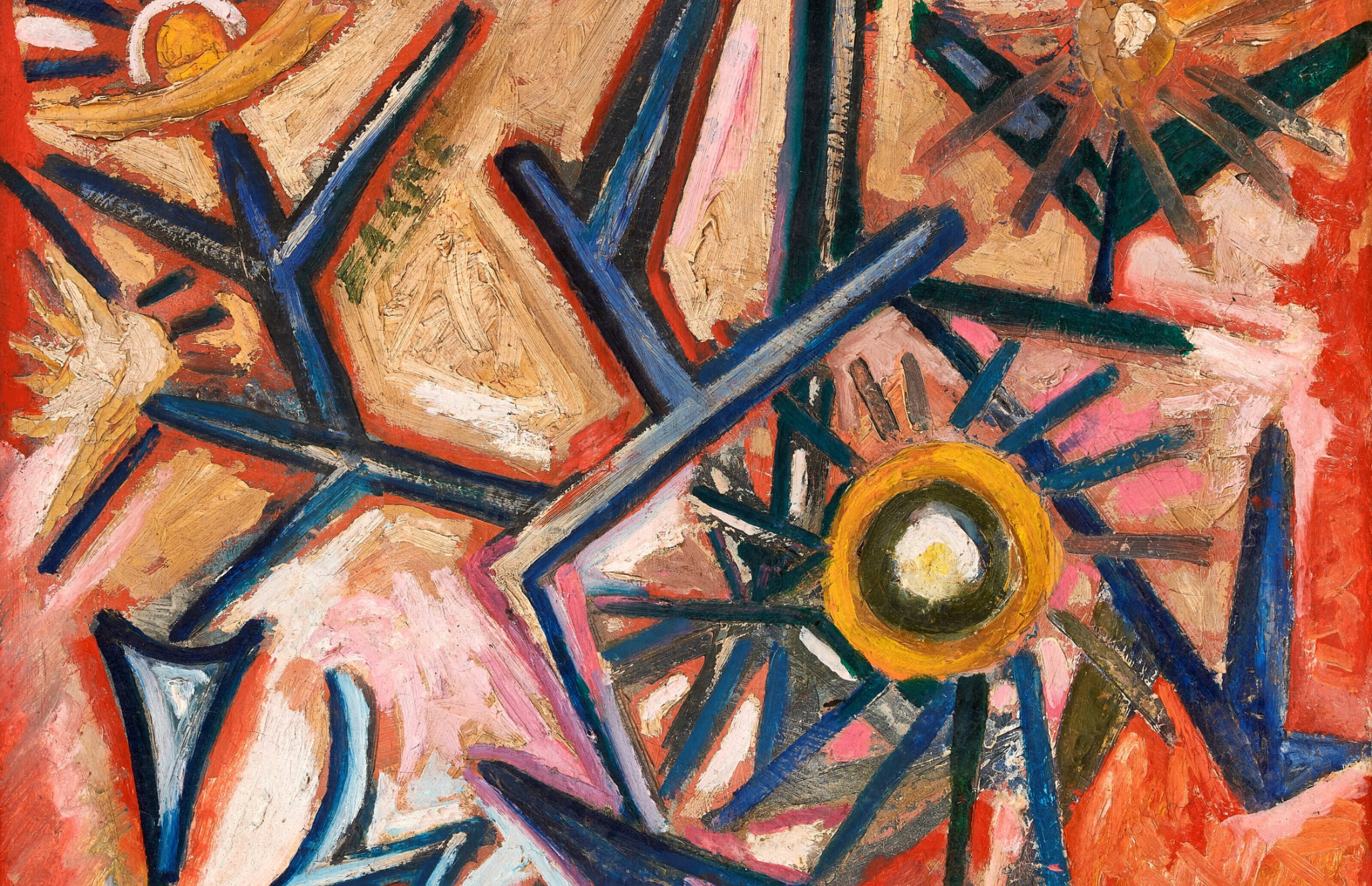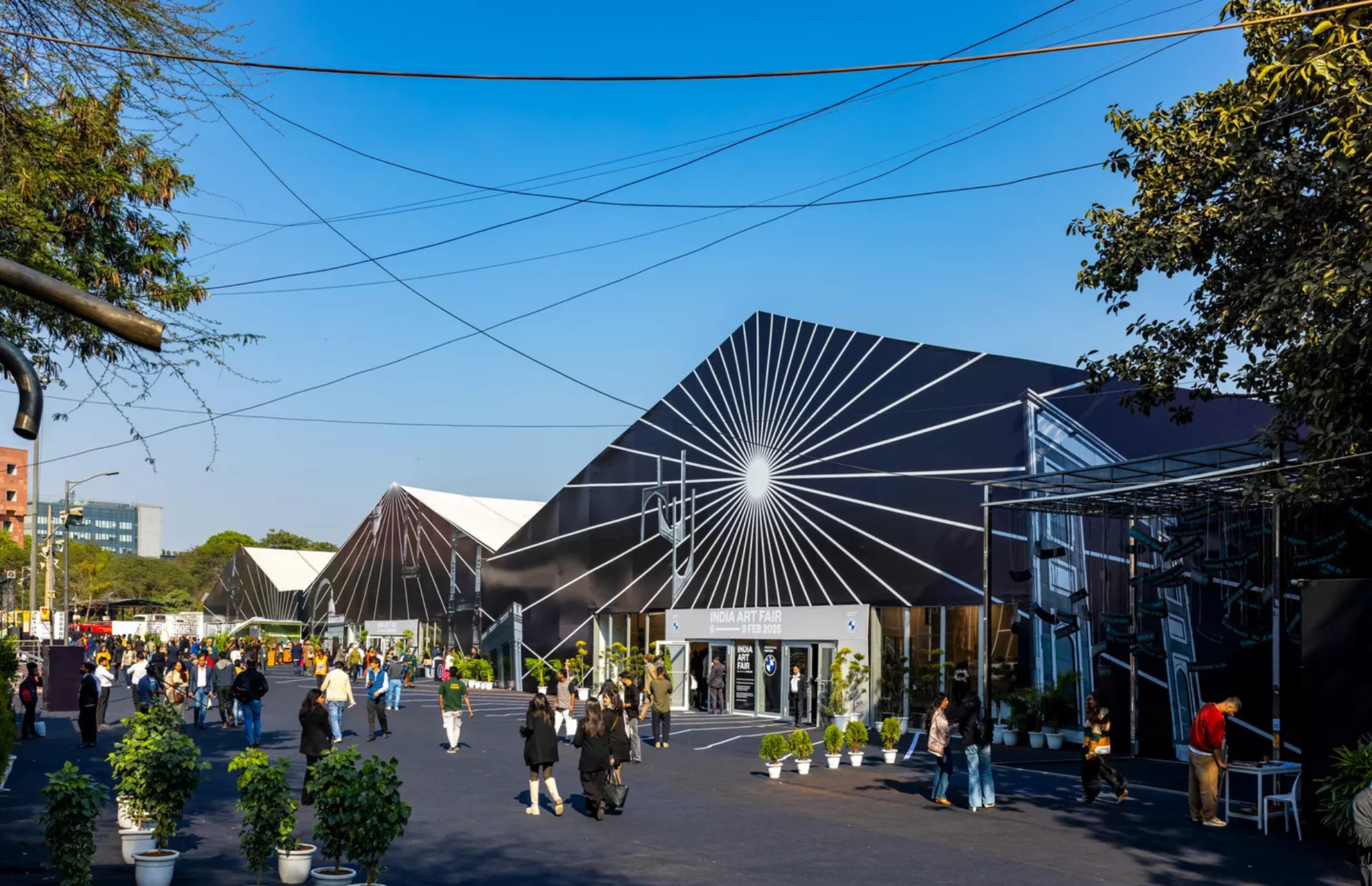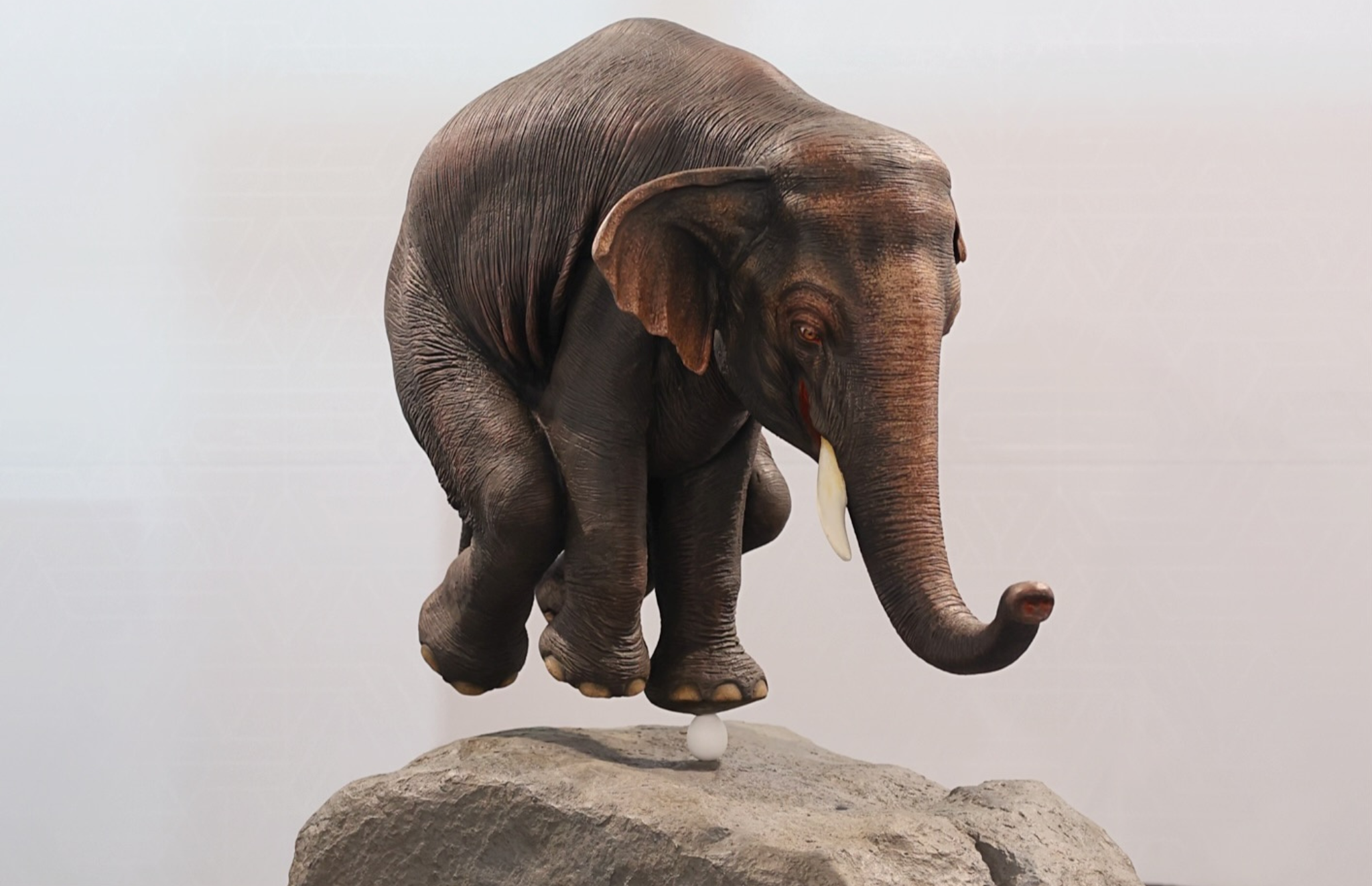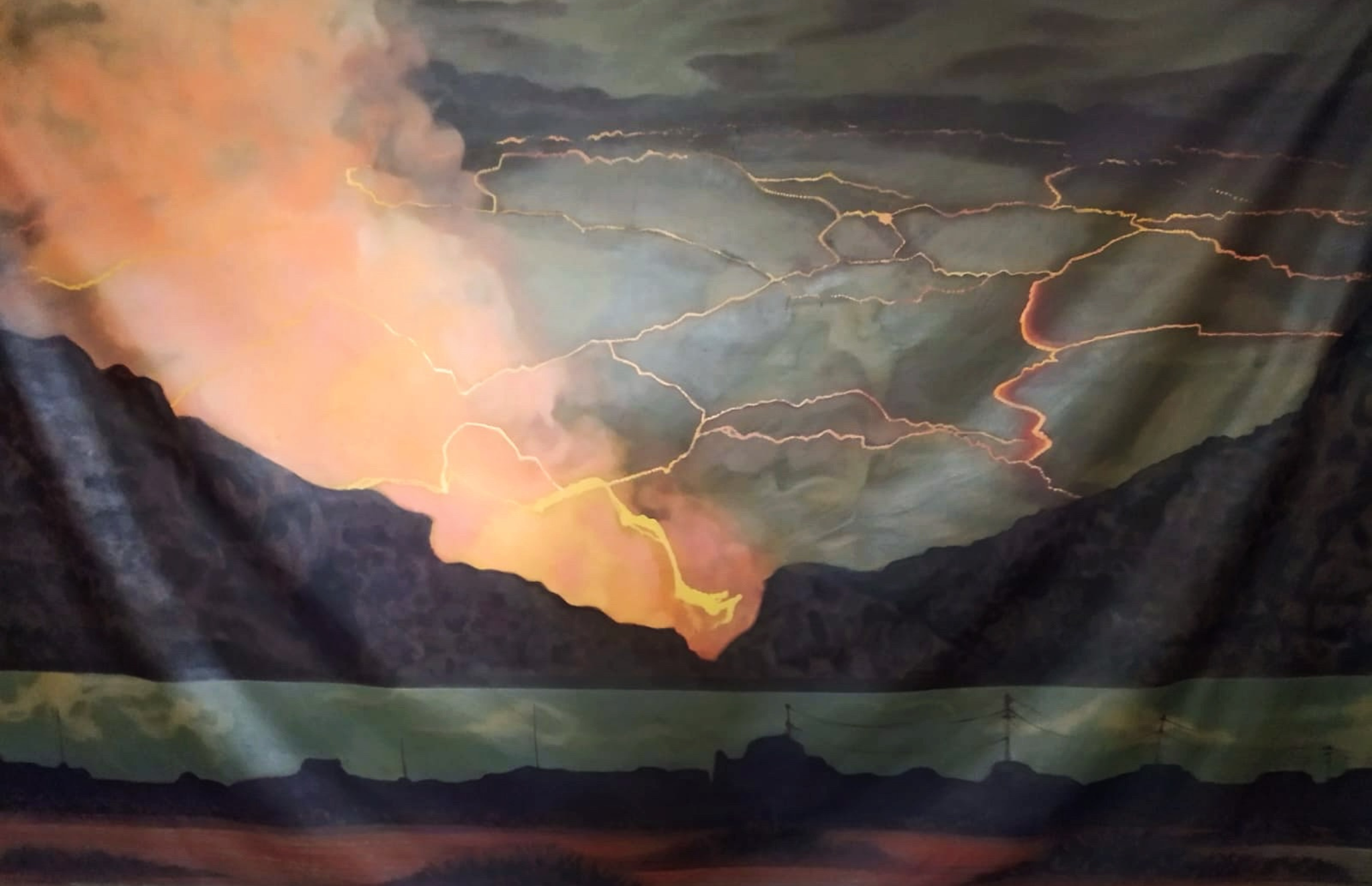THE NEW NORMAL: A SEMBLANCE TO NORMALCY
Pandemic induced lockdowns and social distancing protocols of COVID -19 forced the art world to move past traditional structures and formats and to respond to the new reality with creative ways to showcase and sell art. Online viewing rooms and virtual content platforms became the new normal. Despite the recent opening of gallery spaces for physical viewing after two years of overwhelming uncertainty, a sense of scepticism and caution still surrounds physical visits. The way that people connect to and access art seems to have changed irrevocably or at least for quite some time in the near future. A predominately digital way of operating seems to have stayed on.
It is due to this that online platforms like In Touch will remain significant for showcasing art.
This platform enables the art community to connect with each other through collaborative exhibition-making and recently hosted its seventh edition wherein 12 galleries partnered together. In this article we feature the displays of Vadehra Art Gallery, Shrine Empire, Tradition & Beyond and TARQ.
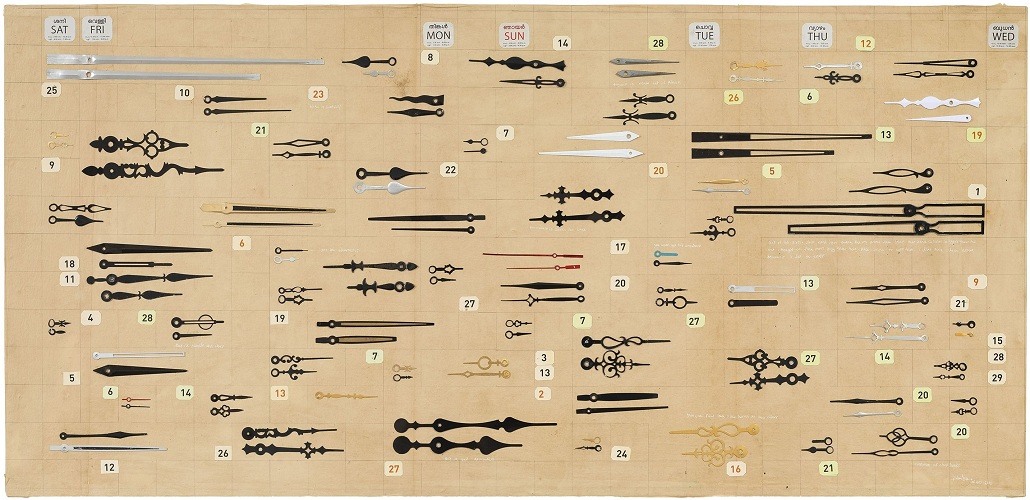
Vadehra Art Gallery
For the 7th edition of In Touch, Vadehra Art Gallery brought together a collection of drawings, watercolours, papercuts, landscapes and collages by Shailesh B. R.
Titled Shooting Stars, the solo exhibit was an assorted collection of Shailesh’s recent works, in which the artist explored the subtleties and grandeur of natural phenomena and presented provocative subjects in a nuanced manner.
Highlights of the show included a vibrant collage that gave the exhibition its title. The artist saw his first shooting star during a visit to Himachal Pradesh in 2017. Later, when back in his studio in Delhi, he collated the memories of this beautiful experience in the hills with visual cues from an European manuscript called ‘Flowers of the sky.’
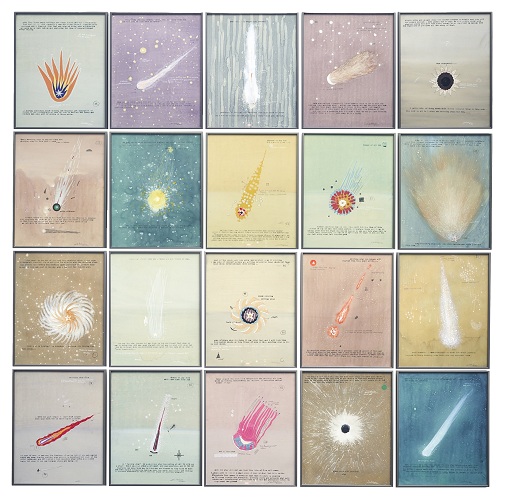
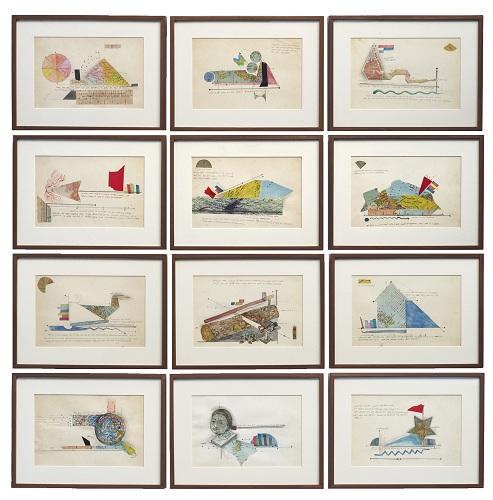
Shailesh B. R, Shooting Stars(left), mixed media on silk screened paper, Map Making (right),mixed media on paper, 2021, Vadehra Art Gallery, In Touch Edition 7
Shailesh’s drawings are a combination of collages, paper cuts and blueprints. He uses gum tape, gift wrappers, watercolour, pen and ink to create the drawings.
Reclaimed material and found objects form the basis of many of his philosophically-inclined works and demonstrate how everyday objects can be transformed or transmuted to lay bare the ironies and contradictions hidden in them. From the last few years he has also been collecting an assortment of clock hands from old timepieces. His work Clock Hands opens a nuanced yet powerful space for reflection wherein many social and cultural constructs are questioned.
Most of the works on display were created between 2020-2021 during the pandemic. Shailesh started this series of watercolours, when in France for the opening of his solo exhibition in 2020 , he found himself stuck in the French countryside due to the lockdown in Europe. Stranded in Nice, he was inspired by the lush beauty of the countryside and started working on these watercolours. Highly reminiscent of David Hockney’s iPad landscapes, these works are a tribute to nature and simple living.
“I had loved Hockney’s Vincent van Gogh series where he recreated many French country scenes. What’s remarkable is that Hockney paints so simply,” expresses Shailesh.
Inspired by Origami and crafts, the artist’s major area of work is kinetic sculptures. During his younger years, he was fascinated by mechanics, which led to this penchant for kinetic installations. He also creates blueprints of complex machinery for representational purposes. Having studied Sanskrit as an adolescent under his father’s tutelage, the influence of concepts from Sanskrit texts is evident in Shailesh’s works wherein he includes esoteric concepts like Vedanta, Tarka Shastra and Buddhi.
He quotes from the Vaisheshika School of Nyaya, “All things which exist, which can be cognized, and which can be named are padārthas, the objects of experience.”
Shrine Empire Gallery
Shrine Empire Gallery’s display titled Between brackets is a collection of works by Shruti Mahajan that deal with the themes of the complexities of home, spaces, identity, and belongingness.These themes have been recurrent through her artistic practice. She has lived in various cities and her idea of home is fragmented and transient. Her series on display extended these themes to cities and dwellings.
When speaking of themes of spaces, cities and home, she says, “I am constantly longing for a place where I feel that I belong. My memory of a place I can call home is fragmented — I remember the verandah of one home, a window view of another, a courtyard of another.”
Between Brackets also drew from two of her earlier series — Spatial Dialogues and Continuity of Construction. In this series she worked with wood, charcoal on paper and charcoal on mount board to create a strong visual vocabulary. Brackets being integral to architectural forms in order to hold these structures together, is the underlying narrative of most of these works that were on display.
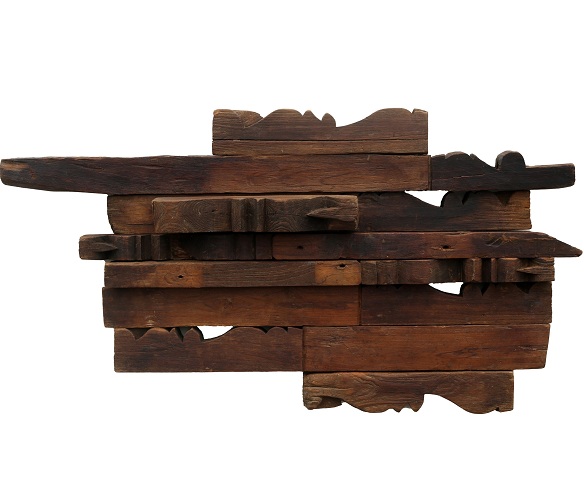
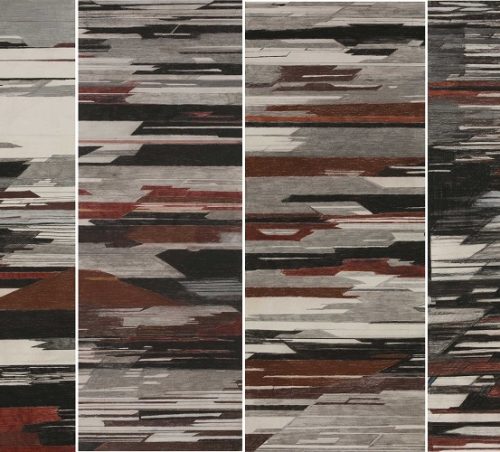
Shruti explains that in these works brackets are also a metaphor for language and connection “What is said between brackets or parentheses adds value to a sentence. Similarly, I like my art to have subtexts,” she says.
Central to these compositions are her experiences and observations from a time she had stayed at the majestic Maheshwar fort (now a heritage hotel) of Ahilyabai Holkar in Madhya Pradesh and had observed the intricacies of opulent Maratha architecture. The flight of stairs from river Narmada to the fort, for instance, is the subject of one of her recent artworks. She included sketches of looms in the exhibit as a tribute her interaction with weavers working on their looms on the banks of river Narmada. Many sketches that made up the display Between Brackets are a tribute to the efforts for the conservation of the fort and are a statement on the importance of conserving heritage structures.
Tradition and Beyond
For the seventh edition of In Touch, Jain texts called The Kalpa Sūtra had been put up on a digital display by Tradition and Beyond which is a curatorial platform that showcases contemporary interpretations of Pichvai art.
This atelier was conceptualised and set up by Pooja Singhal in 2009 and. Its aim as Pooja elaborates is “to sustain, preserve and revive the tradition of pichvai painting“.
Indulging her love for traditional art forms Pooja began putting together Jain folios from her personal collection through the pandemic lock downs and later put them on display.
The Kalpa Sūtra is a Jain text containing the biographies of the Jain Tirthankaras, notably Parshvanatha and Mahavira. Traditionally ascribed to Bhadrabahu, the last acharya of the undivided Jain sangha and the spiritual teacher of Chandragupta Maurya, the text is placed in the 4th century BCE.
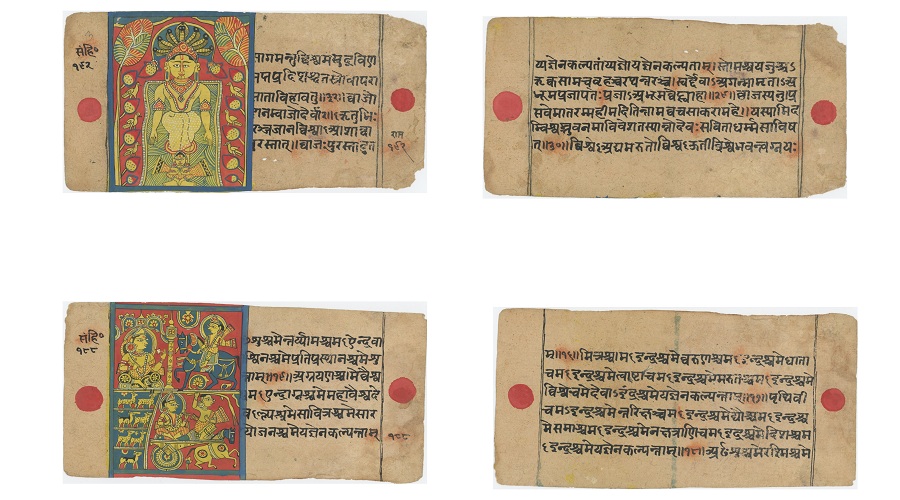
Traditional art has lingered at the fringes of the art movement in India. Making it aesthetically and culturally relevant to contemporary times without meddling with the traditional ethos, spiritual significance and symbolism is a commendable feat. Curating traditional and religious artforms and bringing them into the mainstream involves a secular, design based approach.The dynamics inherent in the play of the artworks, the tone and quality of exhibition space and the manner in which this art is exhibited adds an intriguing dimension to how the work is perceived by contemporary art consumers.
Adding religious art forms other than Pichvai to the atelier’s portfolio reflects the founders’ dedicated efforts to revive and reinvent India’s beautiful traditional artforms.
TARQ
Sameer Kulavoor, a Mumbai based graphic designer, illustrator and founder of Bombay Duck designs, is known for his nuanced compositions, minimalist style and whimsical illustrations. His practice expands on his unique observations of habitations of the metropolis that he is so familiar with. Having grown up in Mumbai, it is the early influences in his life that rapidly developed into his very distinctive personal style and permeate every aspect of his work. His latest body of work that were recently on view at TARQ, Mumbai are isometric artworks that represent different structures one sees in urban landscapes.
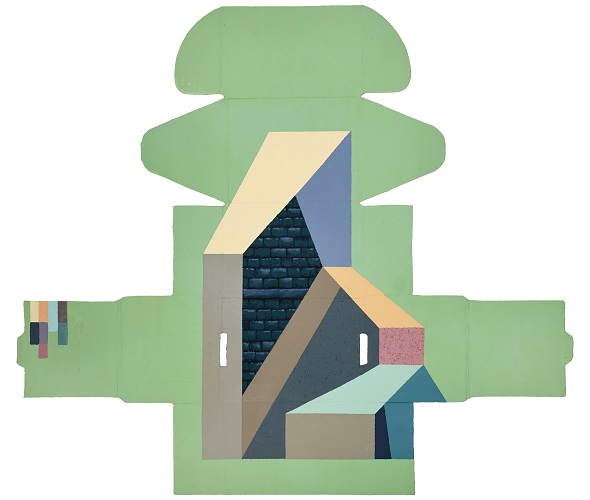
This new series on display titled Fragile, examined the themes that he investigated in his last exhibition You are all caught up ( 2020 ) in which Sameer surveyed the changes witnessed in the city during the first pandemic lockdown. Devoid of human figures which have featured in his earlier observational works, these isometric shapes represent the architectural structures which we see in the city. These compositions came up as nuanced and charged responses to the fragile nature of urban living against the backdrop of the Covid crisis.
Influenced by instances of buildings being washed away by floods and observations of urban habitations where personal spaces are constantly negotiated and violated, Sameer turns to the fragility of corrugated boxes as a replacement for canvas.
As Sameer aptly puts it, “FRAGILE is a response to the push and pull between past and present, formal and informal, form and function and the formations, structures and shapes that occur as a result of this tension.”
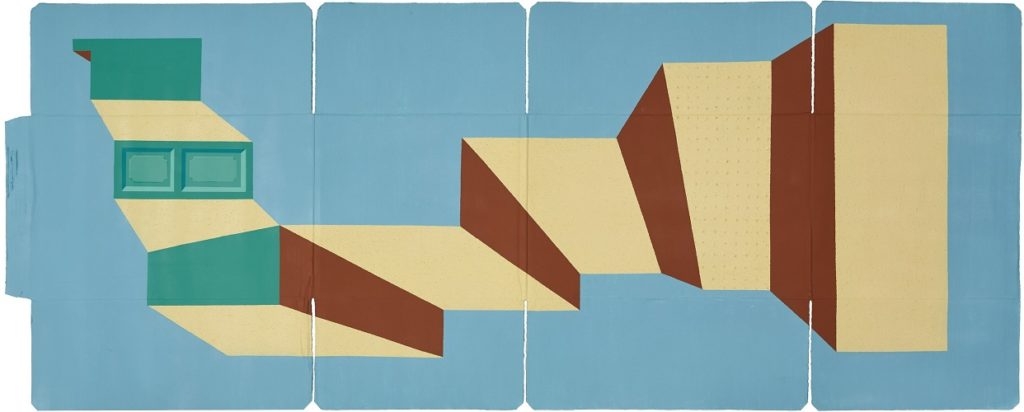
In a text about the work, he says, “Since the onset of the pandemic, I couldn’t help but draw a connection between corrugated boxes and the state of urban housing. Spaces in high-density population areas are essentially boxes for human lives – just about meeting the basic requirements… The outer shape of the die-cut unfolded boxes reminds me of the odd shaped spaces and available floor areas into which housing is somehow retrofitted.”
Text by Prachi Goyal
Images courtesy : Vadehra Art Gallery, Shrine Empire Gallery, Tradition & Beyond, TARQ and the artists Shailesh BR, Shruti Mahajan and Sameer Kulavoor
Find more about the Artists and their artworks:
https://www.artintouch.in/exhibitions/14-vadehra-art-gallery-shailesh-b.r.-shooting-stars/
https://www.artintouch.in/exhibitions/9-tarq-sameer-kulavoor-fragile/
https://www.artintouch.in/exhibitions/12-shrine-empire-shruti-mahajan-between-brackets/
https://www.artintouch.in/exhibitions/17-tradition-and-beyond-kalpa-sutra/

